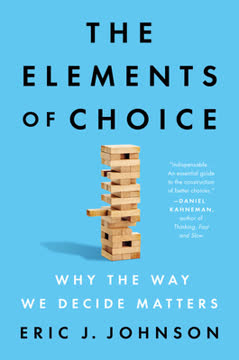Key Takeaways
1. Choice Architecture is an Invisible Partner in Every Decision.
You may not realize it, but in each choice, you have a hidden partner.
Hidden influences. Every decision we make, from ordering a sandwich to choosing a retirement fund, is shaped by how those choices are presented. This "choice architecture" encompasses all design decisions that intentionally or inadvertently influence our actions. The options themselves might be identical, but their presentation can fundamentally alter our selection.
Systematic impact. Years of research consistently demonstrate that presentation profoundly affects choices. For instance, pre-selecting a retirement fund on a website makes us far more likely to choose it, and describing drug side effects as "1% occur" versus "99% no side effects" changes patient decisions. These subtle details, often unnoticed, are the work of choice architects—designers of our decisions.
Everyday designers. We are all choice architects daily, whether we realize it or not. A parent offering a child a choice between "flying into bed or bouncing into bed" instead of a simple "yes or no" transforms bedtime into a less stressful experience. Understanding choice architecture allows us to harness its power for positive outcomes, both for ourselves and for others.
2. Our Decisions Follow "Plausible Paths" Shaped by Perceived Ease.
As we shall see, choice architecture works by influencing the plausible paths used by the chooser.
Decision strategies. When faced with a choice, we quickly and often automatically commit to a "plausible path"—a strategy for deciding what information to focus on, what to ignore, and how to interpret it. Like Captain Sullenberger's rapid decision-making during the Hudson landing, these paths are often chosen on autopilot, driven by a need to "load-shed" overwhelming information.
Fluency guides paths. The subjective feeling of ease, or "fluency," strongly influences which plausible path we take. If a decision feels easy, we're more likely to engage. This can be manipulated by subtle cues, such as bright lane markers at an airport guiding foot traffic, or even the font used to display information, making one path seem less effortful than another.
Screening's pitfalls. When presented with too many options, like on online dating sites, we often resort to "screening"—quickly dismissing alternatives based on one or two salient features. While this feels fluent, it can lead to suboptimal choices, such as overlooking a compatible partner because they don't meet a superficial criterion like height. Fluency, in these cases, can be a "false friend."
3. Preferences Are "Assembled" from Accessible Memories.
What we say we prefer depends upon what we recall.
Mind writing. Our preferences are not always fixed; they are often "assembled" on the spot, constructed from a subset of relevant memories that are most "accessible" at the moment. Like Derren Brown's "mind writing" tricks, choice architects can subtly increase the accessibility of certain concepts, influencing what comes to mind and, consequently, what we choose.
Labeling's power. The way options are labeled significantly impacts which memories become accessible. For example, ground beef labeled "25 percent fat" evokes negative associations like grease and calories, leading to a less favorable perception than the same beef labeled "75 percent lean," which conjures images of delicious, healthy meals. This demonstrates how labels can "write" our preferences in the moment.
Inhibition's role. The act of recalling one memory can "inhibit" or block the recall of other related, potentially useful memories. This explains why Benjamin Franklin advised listing pros and cons over several days: to allow inhibited reasons to resurface. Choice architecture can exploit this by making certain memories highly accessible, thereby suppressing others that might lead to a different decision.
4. Good Choice Architecture Balances Fluency and Accuracy.
A good conversation helps us select options that are best for us and most accurate for the situation at hand.
Dual goals. Effective choice architecture aims for two primary goals: "fluency" (making decisions easy and engaging) and "accuracy" (helping choosers select options that are genuinely best for them). A well-designed COVID-19 app, for instance, asks simple questions (fluent) to guide users to the correct course of action (accurate).
The "right box." Accuracy means getting each individual into the "right box"—the option that aligns with their unique needs and circumstances. For Social Security benefits, a short-lived Uncle Don might benefit from claiming early, while a long-lived Uncle John should delay. A one-size-fits-all approach, like defaulting everyone to late claiming, would harm those like Uncle Don.
Measuring accuracy. Researchers assess accuracy using three methods:
- Dominance: Identifying choices that are objectively better in every way.
- Consistency: Observing if changing presentation alters choices, indicating an error.
- Decision Simulators: Testing if choice architecture helps users achieve a predefined goal, like finding the most cost-effective health plan.
These methods help designers understand if their architecture is truly serving the chooser's best interests.
5. Defaults Are Powerful, Influencing Choices Through Three Channels.
Defaults are similar; they work not just in one way but via three channels, each of which helps to change choices.
The three Es. Defaults—what happens if you don't make an active choice—are incredibly powerful, operating through three channels:
- Ease: Defaults are the path of least resistance, requiring minimal effort. This explains why most iPhone users initially received voluminous paper bills from AT&T, or why retirement savings increase dramatically when employees are automatically enrolled.
- Endorsement: Choosers often perceive the default as a recommendation from the designer. When a state defaults to full auto insurance coverage, people are more likely to choose it, believing the state endorses it as the best option.
- Endowment: Thinking about the default option first makes it more attractive, as if it's already "owned." This is seen in green energy adoption, where defaulting to sustainable electricity makes people focus on its benefits, inhibiting thoughts about cheaper, "gray" alternatives.
Widespread impact. Meta-analyses confirm that defaults are a strong intervention, increasing the choice of an option by an average of 27%. Their effects are particularly pronounced in consumer decisions compared to health decisions. This makes them a potent tool for influencing behavior, from organ donation rates to voter registration.
Strategic design. Designers must carefully consider the implications of defaults. While mass defaults (same for everyone) can be effective, personalized defaults (e.g., "smart defaults" based on age for retirement funds, or "smart-enough defaults" based on a simple question for car features) can better align with individual needs, leading to more accurate choices and greater satisfaction.
6. The Number and Order of Options Dramatically Alter Decisions.
The conclusion is that order effects are larger when the candidates are less well-known or, in the language of political science, when the electorate consists of “low-information” voters.
Choice overload complexity. While the idea that "more choice is bad" (choice overload) is popular, research shows its effects are nuanced. Too many options can reduce fluency and lead to screening, but good choice architecture can mitigate this, allowing for more options without overwhelming the chooser.
Order's hidden hand. The order in which options are presented significantly influences choices.
- Primacy: Being listed first often confers an advantage, especially in simultaneous presentations like ballots, academic paper lists, or online hotel searches. This is due to limited search and a tendency to favor initial options.
- Recency: In sequential presentations, like movie recommendations or figure skating competitions, the last item presented often has an advantage, as earlier options fade from memory.
Sorting's influence. Sorting options by a specific attribute, such as price or academic performance, makes that attribute more salient and important to the chooser. For example, sorting schools by academic performance leads parents to choose better, but farther, schools. This highlights how designers can subtly shift priorities.
7. How Options Are Described Matters More Than the Raw Data.
From the chooser’s perspective, an attribute is a means to achieving a goal, not an end in itself, and names help translate the attribute to the goal.
Attributes vs. goals. People don't choose options based on raw attributes alone; they choose based on how those attributes help them achieve their goals. For instance, "miles per gallon" (mpg) is an attribute, but the goals are saving money or reducing emissions. The "MPG illusion" demonstrates how a misleading metric can cause people to misjudge actual fuel savings.
Translating attributes. Effective choice architecture translates technical attributes into meaningful goals. The EPA's new car labels, for example, display not just mpg, but also "gallons per 100 miles," "annual fuel cost," and "greenhouse gas rating." These "translated attributes" help different consumers connect the car's efficiency to their specific goals, whether financial or environmental.
Metric design. The choice of metric profoundly impacts comprehension and decision-making.
- Non-linear metrics: Interest rates, which compound exponentially, are often underestimated, leading to poor financial decisions. Presenting total costs rather than just rates can improve understanding.
- Categorical scales: Grades (A, B, C) or traffic light colors (red, yellow, green) can simplify complex information, but may suffer from "grade inflation" or limit nuanced comparisons.
- Targets: Round numbers (e.g., 2-hour marathon, 0 points for sustainability) can become powerful behavioral targets, influencing effort and choices.
8. Choice Engines Offer Unprecedented Customization and Comprehension.
Choice engines increase the power and possibilities of choice architecture, making designers more central than ever to choice.
Interactive power. Choice engines, like Netflix or Amazon, leverage interactive digital environments to customize, empower, and educate users in ways static choice architecture cannot. They can dynamically adapt to user input, offering a personalized experience.
Customization through user models. Choice engines use "user models" to tailor options. This can be as simple as asking "Who is watching?" on Netflix, or a "smart-enough default" like asking car buyers their desired car type (family, sports, economy) to set appropriate defaults. More complex systems use AI for "collaborative filtering" (e.g., "People who bought this also bought...") or "content-based filtering" (e.g., Pandora's Music Genome Project).
Empowering comprehension. Choice engines can enhance understanding. Health insurance websites, for example, use calculators to combine complex factors like premiums, deductibles, and copays into a single "total annual cost," significantly improving decision accuracy, especially for vulnerable users. They can also provide on-demand explanations for complex terms, acting as patient instructors.
9. Unawareness of Influence Makes Us Vulnerable to Manipulation.
Most people are unaware of the effects of accessibility, and the term mind writing would seem mysterious to them.
The illusion of control. People often have conflicting beliefs: they acknowledge that others' choices are influenced by external factors, but firmly believe their own decisions are driven solely by free will. This makes them largely unaware of how choice architecture subtly shapes their behavior.
Subtle forces. Magicians' "forcing" techniques, like Derren Brown's "mental priming," demonstrate how subtle cues (gestures, word choices) can covertly influence choices, even when spectators believe they are choosing freely. Similarly, choice architecture can double generosity in a "dictator game" or influence end-of-life care decisions, with most people denying any external influence.
Disclosure's limits. Simply disclosing the presence or intent of choice architecture is often ineffective. People may know they are being influenced, but without understanding how the mechanisms (like accessibility or plausible paths) work, they remain unable to resist. This lack of awareness leaves choosers vulnerable to exploitation.
10. Neglecting Choice Architecture Harms the Most Vulnerable.
Choice architecture has a larger effect on the most vulnerable: those with lower incomes, less education, and challenging social circumstances.
Unintended consequences. Choice architecture is not optional; it is always present. Neglecting its design can lead to unintended harm. For example, the Social Security Administration's "break-even age" information inadvertently caused people to claim benefits earlier, against their best interests, before it was removed.
Malevolent design. Some designers intentionally create "malevolent choice architecture" to exploit choosers.
- Subscription traps ("roach motels"): Easy to sign up, hard to cancel, exploiting fluency.
- Obscured privacy settings: Complex, multi-step processes designed to deter opting out.
- EHRs and opioids: Pharmaceutical companies paid to embed alerts in electronic health records, nudging doctors to prescribe specific, often inappropriate, drugs, contributing to the opioid crisis.
Disproportionate impact. The negative consequences of poorly designed or malicious choice architecture disproportionately affect vulnerable populations—those with lower incomes, less education, or unmet health needs. These groups are more susceptible to subtle influences and less equipped to navigate complex, deceptive environments.
11. Ethical Design Requires Understanding How Choice Architecture Works.
Design for others as you would like them to design for you.
Ethical imperative. Ignoring choice architecture is ethically wrong because designers inevitably influence choosers. Pretending otherwise leads to suboptimal outcomes for both parties. The ethical imperative is strongest when decisions are important, rare, or affect vulnerable populations.
Empowering choosers. The solution lies not just in awareness, but in understanding how choice architecture works—how it shapes plausible paths and assembles preferences. This knowledge empowers choosers to recognize and potentially resist manipulation, transforming them from passive recipients to active participants in their decision environments.
Beyond traditional tools. Choice architecture offers a powerful, efficient, and often inexpensive complement to traditional economic tools like information and incentives. It can address complex societal problems:
- Climate change: Defaults for green energy, clearer metrics for emissions.
- Inequity: Improved access to social benefits, better school choices, fair tipping mechanisms.
- Polarization: Framing policies with concrete, personal numbers to foster agreement, or nudges on social media to encourage reading before sharing.
The golden rule of design. As designers, whether for large institutions or for ourselves, we must embrace the responsibility that comes with this influence. The ultimate guiding principle should be to "Design for others as you would like them to design for you," fostering intentional, constructive, and beneficial choice environments for all.
Last updated:
Review Summary
The Elements of Choice receives mostly positive reviews for its insights into choice architecture and decision-making. Readers appreciate the book's practical examples, scientific approach, and accessible writing style. Many find it enlightening, revealing how subtle factors influence our choices. Some critics note overlap with similar works and occasional tedium. Overall, reviewers recommend it for those interested in behavioral economics, psychology, and understanding how choices are presented and made.
Similar Books
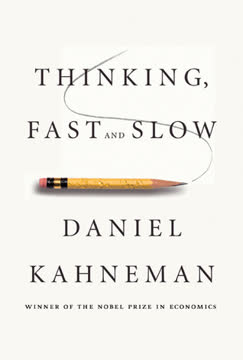
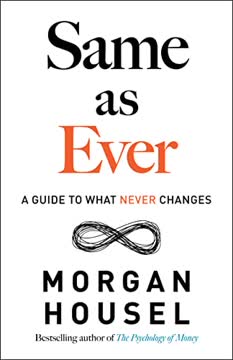

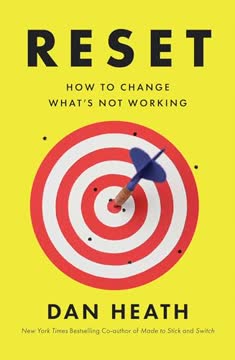
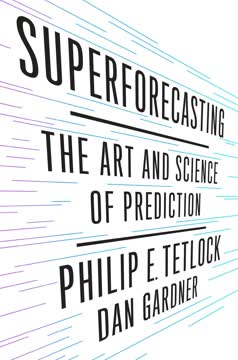
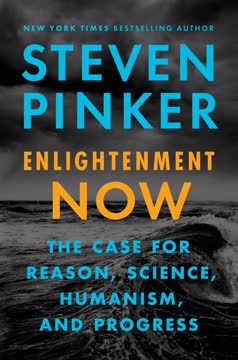
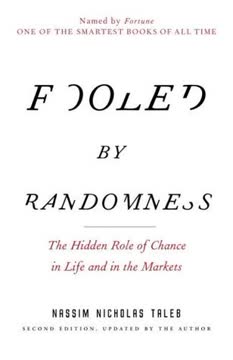
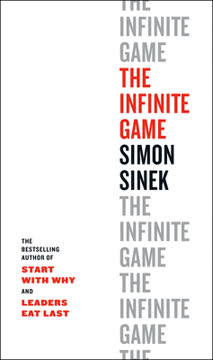
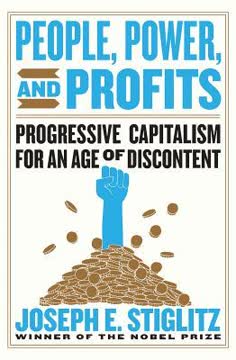
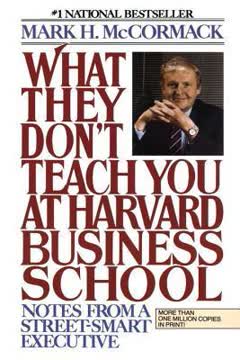
Download PDF
Download EPUB
.epub digital book format is ideal for reading ebooks on phones, tablets, and e-readers.
